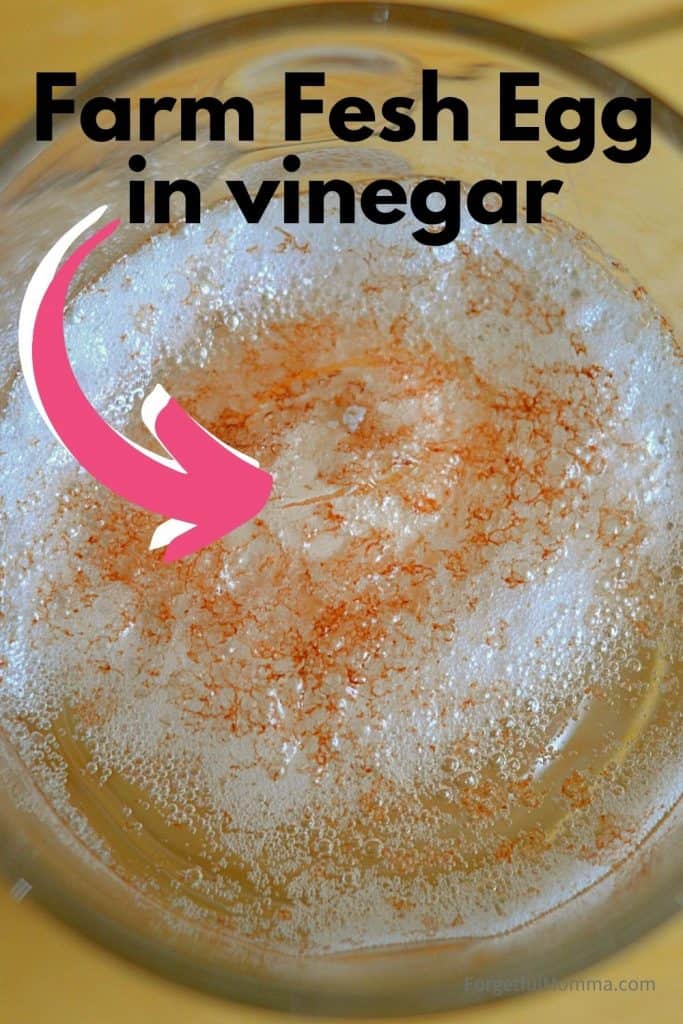Science can be a lot of fun. Making a bouncy egg is fun, especially since we all have experienced what happens when you drop an egg on the floor and what kind of mess that makes, but what if it didn’t make a huge mess? What if instead, it bounced back. We always enjoy science experiments in our homeschool and the learning that comes from them.

*This post may contain affiliate links. For more information see my disclosure policy.*
What you need:
- jars or glasses
- vinegar
- water
- raw eggs (we used farm fresh)
How to Make a Bouncy Egg:
In our original experiment, we put an egg in a jar of vinegar – on the left, and an egg in a jar of water – on the right. My girls noticed the bubbles around the vinegar egg.

We used small jars so that we could screw the lids on tight to avoid a smell. Then we put them on the counter and waited. And waited. Then to our disappointment forgot, we forget each and every time that we do this experiment.

What Happens When You Forget
Everything I read said to leave them for 72 hours. We left ours for at least 100. Yes, much longer. But we held out hope. Hope that it was still going to work, that there was going to be a bounce.
Now, the bubbly film on top of the vinegar is normal, but our looks a little odd because this was a fresh, unwashed chicken egg, straight from the nesting box.

We took our vinegar egg out. It was bigger than the regular (water) egg. And missing a crucial part of an egg – the shell. We had a naked egg.
Holding the egg seemed quite odd, it was like a rubber egg, and tougher than it seemed. We all handled it, and it didn’t break. It did however fail the bounce test. My kids had a good laugh at it, and then we checked out of the membrane.

What Happens When You Remember
I redid the experiment with much better results. I set an alarm on my phone this time, labeled it so I would know why it was going off.
When left in the vinegar for only 72 hours you had to rub then rinse the shell off of it. I used a slow flow of water, just in case. And we got a naked egg, just like we did with the original really long vinegar soak.
We all handled this egg as well, and it didn’t break. And then came the bounce test. It worked! It worked, I bounced it a number of times, before it broke. I call this egg and vinegar experiment a success.

Make a Bouncy Egg
Did you know you can make an egg bounce?? You can with just vinegar.
Materials
- vinegar
- water
- raw eggs
Tools
- Mason jars
Instructions
- Place your egg in a jar and fill with vinegar to cover the egg.
- When left in the vinegar for only 72 hours, you simply rub then rinse the shell off of it the egg membrane. I used a slow flow of water, just in case.
- Now you get to test it out with a bounce.
Shrink an Egg
Want to take this science experiment a step further? You can shrink, or dehydrate your shell-less eggs now. Check out this science experiment to learn more.
